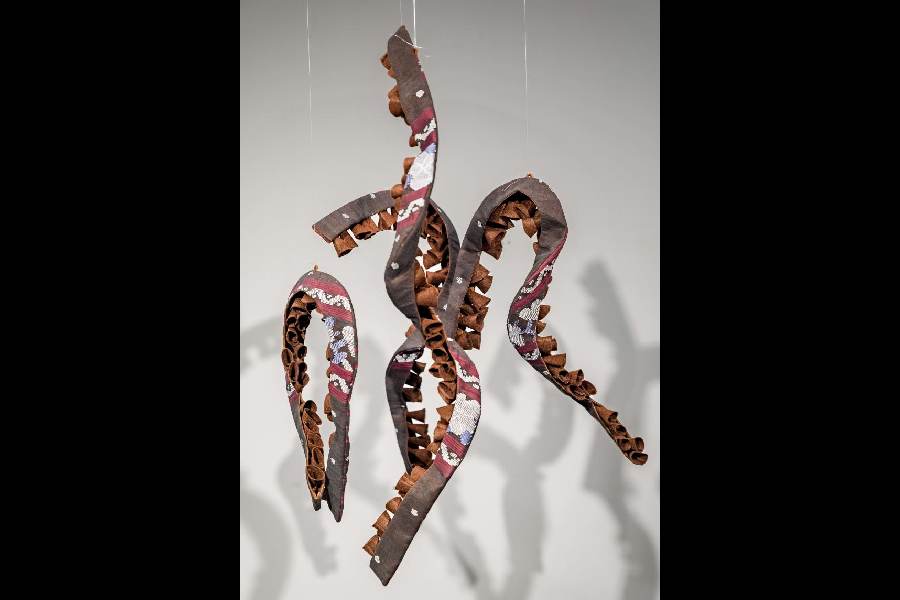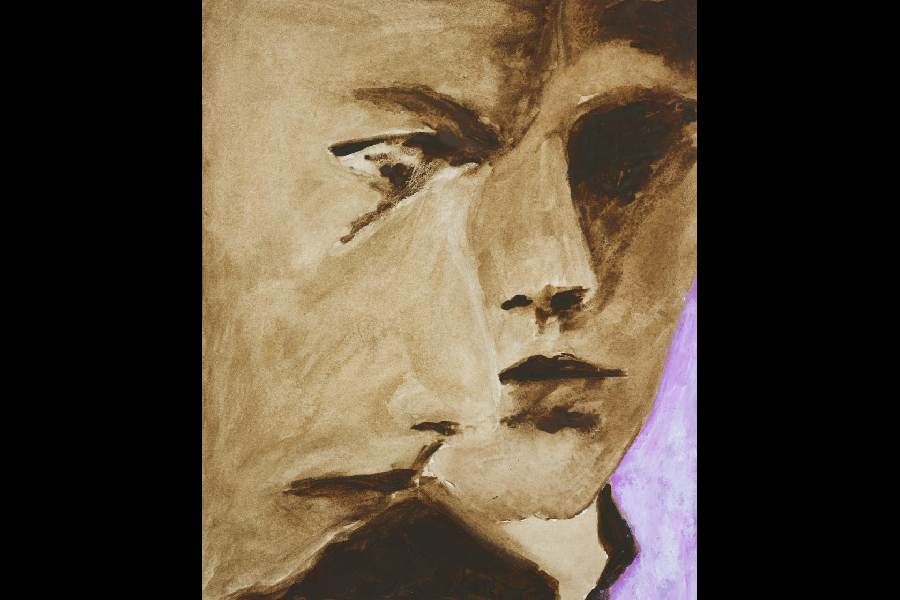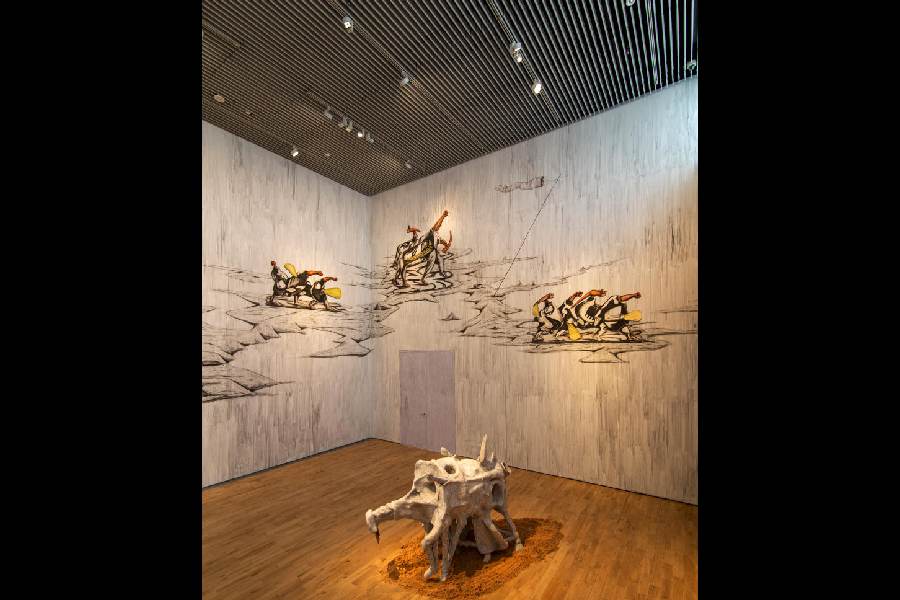Experimenter, the brainchild of Prateek and Priyanka Raja, completes a decade and a half in Calcutta. Born out of sheer passion and steered with perseverance and panache, the contemporary art space and gallery stood as a mirror to the current times and emerged as a space for creative spirits who passed on their infectious energy and touched the souls of Calcutta and Calcuttans. t2 caught up with the directors and co-founders of Experimenter as they kick off a celebration for the landmark year today.
Congratulations on Experimenter turning 15! Let’s rewind and talk about your journey with Experimenter and the gallery.
Thank you! The ‘thank you’ is to the innumerable people who too have journeyed with us over the years. Since we have a wide public audience, we have had the possibility to share this journey with our visitors, artists and supporters.
Our journey with Experimenter started more than 15 years ago although the physical gallery opened in 2009. Experimenter was and continues to be an idea that was birthed about 18 years ago when we both, in our mid-20s then, were confronted with a vastly changing world around us. In the mid-2000s (like even now) things that we had held as pillars of our society, our ideological and political positions, were faced with unprecedented shifts and we knew that we had to be a mirror to that moment, in some ways to be a recorder of time. That strand of being a mirror to the current times runs through everything we do, either through the work of the artists we show who speak about global concerns, or through the collateral programmes and discussions we organise across our spaces.

Experimenter's 15th anniversary's exhibition
The first gallery opened in 2009 on Hindustan Road in Calcutta, holding at the centre of its physical space the inner courtyard of an early 20th-century home. It became a space to gather, discuss and debate the challenging and often provocative questions that the exhibitions seemed to be asking. This sense of inquiry and need to learn is also central to our nature and the urge to learn birthed the annual and much-acclaimed Experimenter Curators Hub, which had its 13th edition in November 2023.

Later in 2018, owing to the need to expand our physical exhibition spaces and house our growing team, we opened a second gallery at the much larger Ballygunge Place location. We started the Experimenter Learning Program Foundation and our artist book publications initiative Experimenter Books in 2018 as well. In 2020, faced with the pandemic and uncertainty for artistic practices, our team started the Generator Cooperative Art Production Fund as part of Experimenter Labs. Generator is a completely revolutionary way of supporting the arts with shared resources, breaking hierarchies inherent in grant giving. This is a hugely successful initiative which continues to support unrepresented artists at crucial junctures with micro-bursaries for artistic production and has awarded over 60 grants since.

In 2022, we opened a third space in the heart of Bombay, Experimenter Colaba, bringing to the city our programme and celebrating its diversity and multitude of voices. The learning has been steep, yet our experience from it is unparalleled. Experimenter continues to be an idea and a way of thinking and our incredible team has imbibed those ways of thinking over the years and led from the front to transform the galleries from spaces of passive viewing to programmes of active learning.
What would you count as your biggest achievements?
We would consider our biggest achievement to be able to continue doing what we started out with single-minded focus and staying our course. We believe we have been able to seed the Experimenter way of thinking amidst our colleagues, our artists, and whoever we interact with and have been able to keep the essence of that idea alive as a significant achievement. Finally, but most importantly, the trust and faith that our artists have in us as representatives of their work and voices of their thinking and the relationships and friendships we have built over time with supporters, global institutions and the larger community is our most significant achievement.
Are there things/events that you consider landmark in the last 15 years?
Landmarks, for us, are different and go beyond the usual marking of years or the physical expansion of our programme. It comes through the many instances over the years of being able to bring change at a very local, immediate surrounding or to be recognised by some of the most forward-thinking minds today from far corners of the world. We learn that global organisations, major museums and other private and public institutions mount exhibitions of artists we have worked with over the years. It is also fabulous to know we are able to bring into dialogue and discourse the underrepresented voices, change the way discussions around art have taken place and to know we have had a small but significant role in it. To be able to continue to work closely with incredible artists who continue to push those boundaries and also to see the organic growth of the gallery and the incredibly talented team that runs the gallery and thinks together. These are landmarks for us.
The celebration started in Mumbai on Jan 11 and will culminate with a special weekend in Calcutta...
As we step into our 15th year we feel the need to continue to engage deeper within the cities we inhabit and its public spaces. To begin with, in our Bombay gallery we open Sohrab Hura’s much-awaited solo, ‘Ghosts In My Sleep’, which brings to Mumbai for the first time the brilliant and sensitive mind of the artist through a new series of gouache and pastels on paper alongside video and sound. Also, we open an immersive video installation environment ‘Bombay Tilts Down’ by CAMP at a very public and large, cavernous old warehouse near Sassoon Docks in collaboration with St+art India and supported by Mumbai Port Authority, which brings to the city an incredible environment of music, images and 10 days of public programming, walkthroughs, concerts performances and talks.
In Calcutta we open the two solo exhibitions — Afrah Shafiq’s ‘I Fell Asleep a Believer and Woke up An Atheist’ at Experimenter Hindustan Road. It revolves around the findings encountered by her in the phenomenon of illustrated children’s books from the former Soviet Union that were widely popular in India during the Cold War years and shaped our understanding of geopolitics at the time, culminating in a narrative video game. At our Ballygunge Place gallery, Alexandra Bachzetsis’s ‘Notes on Becoming’ will unfold at the intersection of dance, performance, the visual arts and theatre, generating a conflation of the spaces in which the body as an artistic and critical apparatus, can manifest. The exhibition is supported by Swiss Arts Council Pro Helvetia.
Opening on the same weekend, we curate two solos by Prabhakar Pachpute and Kallol Datta that mark the inaugural exhibitions of TRI — a not-for-profit centre for art and culture, spearheaded by Varun and Nitasha Thapar who are launching this new arts infrastructure in our city. Prabhakar’s solo ‘Sea of Fists’ is a massive installation with wall drawings, paintings and sculpture that is showing for the first time in India after having shown in significant institutions all over the world. Kallol’s ‘Volume 3 Issue 2’ is a continuation of his avant-garde experimentation with form and material through textile and will create an entire environment with organic forms inhabiting the first floor of the space.
There are also planned city walks, community learning possibilities and other collateral programs that are of interest to the large number of visitors that are coming from outside the city to partake in the celebrations.
Experimenter functions in two cities — Mumbai and Calcutta. How do you think the artscape has changed or evolved in these last 15 years? Is there anything that Calcutta needs to learn from Mumbai or vice versa?
We feel both cities have deep and layered histories and are amalgamations of multi-cultural influences over time. As a result, they both have great institutions and communities that have so much to learn from each other. While the audiences in Calcutta are active and are unhesitating to ask difficult questions, the energy and inquisitiveness in the audiences of Mumbai are unmatched. The arts landscape has continued to evolve albeit at different paces in both Calcutta and Mumbai and new spaces and new models of showing work have emerged, collaborative initiatives have evolved and artist-run spaces have also grown tremendously.
Moving ahead, what are your plans?
We will continue to do what we do with a single-minded focus, embedding our programme in our galleries and the public space in the cities we have our galleries in and beyond. We have an ambitious programming calendar across the three galleries and an extensive calendar with seven international fairs this year. We have a very active programme for our Learning Programme Foundation as well as the Curators’ Hub later this year. Many of our artists are going to have major institutional exhibitions this year as well as are part of major international exhibitions. We feel we are on the next phase of our journey with the gallery already based on deeply entrenched programming of the past and current year.
Pictures courtesy: Experimenter
